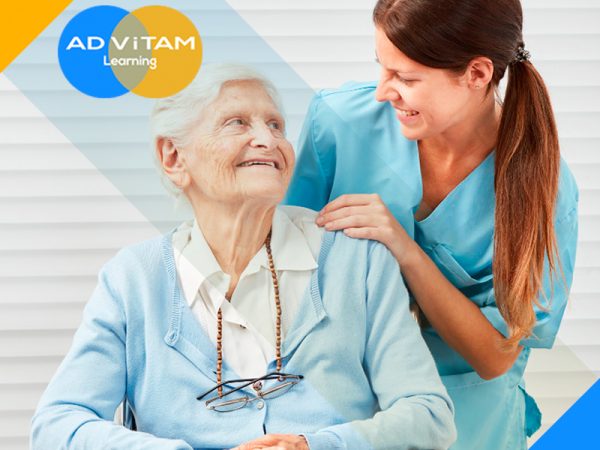Description
Conflict Resolution in Health and Care | Level 1 | Online Training Course | CPDUK Accredited | Instant Course Access | Includes Assessment & Certificate | Instant Certificate Download.
Welcome to our online Conflict Resolution in Health and Care training course for front-line healthcare and social care providers. All our online training courses, programmes and qualifications are accredited by the CPD Certification Service (CPDUK).
Staff must feel safe in their working environments. Violent behaviour not only affects them personally but indirectly, it harms the standard of service and the delivery of care. In terms of tackling violence against staff, Conflict Resolution Training (CRT) is a crucial preventative tool. It forms part of a range of measures introduced to make health and social care organisations safer places to work.
It is not sufficient to react to incidents after they occur; ways of reducing the risk of incidents occurring and preventing them from happening in the first place must be found.
Certificate duration: 2 years
Entry requirements: No entry restrictions
Recommended prerequisites: N/A
Assessment type: End of course assessment
Assessment pass mark – 80% needed to pass and gain a CPD certificate
Cost(s) of assessment and certification – All costs included in the course price
Awarding/Accrediting body – CPD Certification Service (CPDUK)
Who is the course for?
This online Conflict Resolution in Health and Care training course will benefit all frontline health and social care workers whose work brings them into direct contact with members of the public, including:
- NHS medical, nursing, AHP and care staff.
- Locum doctors and nurses.
- Locum allied health professionals (AHPs),
- Agency nurses,
- Agency workers,
- Healthcare assistants,
- Support workers,
- Care assistants,
- Nursery staff, and
- Community services.
Under current UK legislation, it is the employer’s responsibility to ensure that these individuals and roles are risk-assessed about violence and aggression. All healthcare and social care professionals who are at risk of verbal or physical aggression must complete conflict resolution training.
Some staff may require further physical training, including disengagement, defence techniques, basic guiding and holding/restraint techniques for varying risk levels and situations.
What is covered in this course?
This online Conflict Resolution in Health and Care training course covers the following:
- Understanding why conflict resolution is essential,
- Understanding the role of NHS Protect concerning conflict resolution,
- NHS security management roles and responsibilities
- Common causes of conflict in healthcare and social care settings,
- The importance of effective communication in resolving conflict,
- Understanding how to utilise our body language to avoid contact effectively,
- Knowing how communicating our feelings and attitudes can help to manage conflict effectively,
- Knowing how to avoid communication breakdown,
- Understanding how cultural differences can contribute to conflict,
- An introduction to effective communication models for conflict resolution:
- LEAPS communication models,
- PALMS Communication models,
- Five-step appeal communication model.
- The attitude and behavioural cycle,
- Understanding the main patterns of behaviour about conflict,
- Awareness of the warning signs and danger sigs,
- Knowledge of the basics of de-escalating conflict,
- Understanding of the importance of maintaining personal safety when de-escalating conflict,
- Understanding the impact factors for lone workers,
- How to do dynamic risk assessments for lone workers, and
- Awareness of the importance of personal space.
Course aims
The aims and objectives of this online Conflict Resolution in Health and Care training course are to:
- Improving the learner’s understanding of the causes of conflict in health and care settings,
- Provide the learner with a clear understanding of the legislation regarding conflict resolution, and
- Explain the main models for conflict resolution.
Learning outcomes
The learning aims and associated outcomes are based on de-escalation techniques. The aims address the way one communicates, patterns of behaviour, recognition of warning signs, impact factors and preventative strategies. At the end of this online Conflict Resolution in Health and Care training course, learners should be able to:
- Explain the role of the Security Management Director and Local Security Management Specialist or their equivalent,
- Describe the common causes of conflict and identify the different stages of a conflict,
- Learn from their own experience of conflict situations to develop strategies to reduce the opportunity for conflict in the future,
- Describe two forms of communication,
- Indicate the level of emphasis that can be placed on verbal and non-verbal communication during a conflict situation,
- Understand the impact that cultural differences may have about communication,
- Identify the causes of communication break down and the importance of creating conditions for communication to succeed,
- Utilise three communication models that would assist in dealing with different levels of conflict,
- Recognise the behavioural pattern of individuals during a conflict,
- Recognise the warning and danger signals displayed by individuals during a conflict situation including the signs that may indicate the possibility of physical attack,
- Identify the procedural and environmental factors affecting conflict situations and recognise their importance in decision making,
- Understand the importance of keeping a safe distance in conflict situations,
- Summarise the methods and actions appropriate for particular conflict situations bearing in mind that no two cases are same,
- Explain the use of ‘reasonable force’ as described in law and its limitations and requirements,
- Identify the range of support, both short and long-term, available to those affected by a violent incident, and
- Understand the need to provide support to those directly affected by violent conflict and the broader organisational benefits of this.
What is conflict?
Conflict refers to some form of friction, or discord arising within a group when the beliefs or actions of one or more members of the group are either resisted by or unacceptable to one or more members of another group.
Conflict can arise between members of the same group, known as “intragroup” conflict, or it can occur between members of two or more groups and may involve violence, interpersonal discord conflict. Conflict in groups often follows a specific course. An initial conflict first disrupts routine group interaction, usually caused by differences of opinion, disagreements between members, or scarcity of r in some cases gives way to a conflict resolution stage, after which the group can eventually return to routine group interaction
What is conflict resolution?
Conflict resolution is conceptualised as the various methods and processes involved in facilitating the peaceful ending of conflict and retribution. Committed group members attempt to resolve group conflicts by actively communicating information about their conflicting motives or ideologies to the rest of the group (e.g., intentions; reasons for holding certain beliefs), and by engaging in collective negotiation.
Dimensions of resolution typically parallel the aspects of conflict in the way the conflict is processed. Cognitive resolution is the way disputants understand and view the conflict, with beliefs and perspectives and understandings and attitudes. Emotional resolution is in the way disputants feel about a conflict, the emotional energy.
Behavioural resolution is how one thinks the disputants act, their behaviour. Ultimately, a wide range of methods and procedures for addressing conflict exist, including negotiation, mediation, mediation-arbitration, diplomacy, and creative peacebuilding.
Why is this online Conflict Resolution in Health and Care training course important?
It is crucial that employing organisations deliver the appropriate level of conflict resolution training to meet the needs of staff at their organisation. For example, the clinical and environmental factors affecting conflict for ambulance services or mental health services will be different from those experienced within the in-patient setting.
Even within each type of health organisations, there may be different factors coming into play such as location, demographics and geography. Therefore, in addition to delivering the core learning outcomes organisations will need to make a risk assessment of the CRT needs of their staff. In some cases, this may result in training with additional learning outcomes to meet and mitigate the identified risks.
CRT provides staff with necessary de-escalation, communication and calming skills to help them prevent and manage violent situations. However, there are some incidents which may involve challenging behaviour that is clinically related, one common characteristic is where the individual involved in the event may have some degree of cognitive impairment, and their communication may be temporarily or permanently impaired.
NHS organisations and providers of NHS services may, therefore, choose to include clinically related challenging behaviour awareness as part of a combined course with CRT or incorporate it as part of other training initiatives, such as those addressing staff training needs around dementia.








